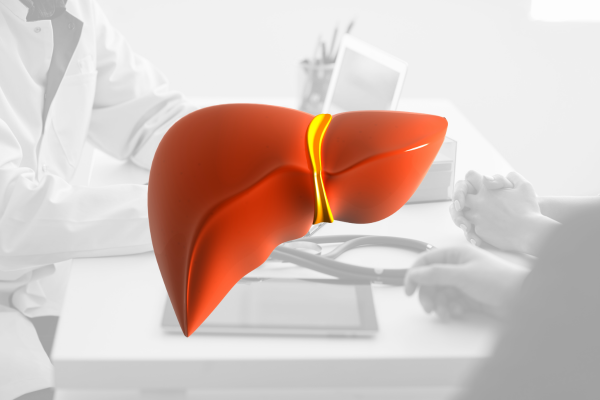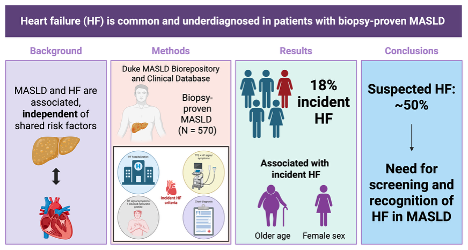
A recent study, led by Duke University researchers and published in the European Journal of Heart Failure, revealed a strikingly high incidence of heart failure (HF) among patients with biopsy-confirmed metabolic dysfunction-associated steatotic liver disease (MASLD), a condition formerly known as non-alcoholic fatty liver disease (NAFLD).
The findings suggest that HF is common and underrecognized in the MASLD patient population, raising concerns about missed opportunities for early intervention.
The study was a collaborative effort between Duke gastroenterologist Kara Wegermann, MD, Duke Clinical Research Institute’s Marat Fudim, MD, MHS, and others from Duke and collaborating institutions.
“This is the first study to assess heart failure incidence in a cohort with MASLD confirmed by liver biopsy — the gold standard for diagnosis,” Fudim said. “The findings highlight a critical gap in the recognition and diagnosis of heart failure in this high-risk group.”
The research team examined health data from 570 adult patients with biopsy-proven MASLD in the Duke University Health System NAFLD Clinical Database and Biorepository.
They then followed the patients over a median of 11 years. Analysis showed that nearly 18% developed heart failure during the follow-up period, while almost half (47.9%) showed signs suggesting HF, despite few receiving a formal diagnosis.
Study Findings:
- Incident HF occurred in 100 of 560 patients (17.9%) without baseline HF.
- HF suspicion, defined by symptoms, elevated biomarkers, or echocardiographic abnormalities, occurred in 268 patients (47.9%).
- Diastolic dysfunction was found in nearly one-third of patients with echocardiograms.
- Older age and female sex were associated with a higher risk of HF.
- Diabetes was independently associated with HF suspicion, suggesting that it may confer an elevated risk of HF in patients with MASLD.

“Our findings point to the underdiagnosis of HF and lack of recognition of diastolic dysfunction in patients with MASLD,” Wegermann said. “There is a real opportunity to develop better screening strategies so we can identify these patients earlier or even prevent symptomatic heart failure.”
Based on the results, the authors suggest that targeted screening programs for patients at a higher risk — such as patients with MASLD who have diabetes, hyperlipidemia, or who are female — could promote earlier HF detection.
The researchers also call for more prospective studies to validate the findings and explore whether early detection and treatment of HF in MASLD could improve overall outcomes.